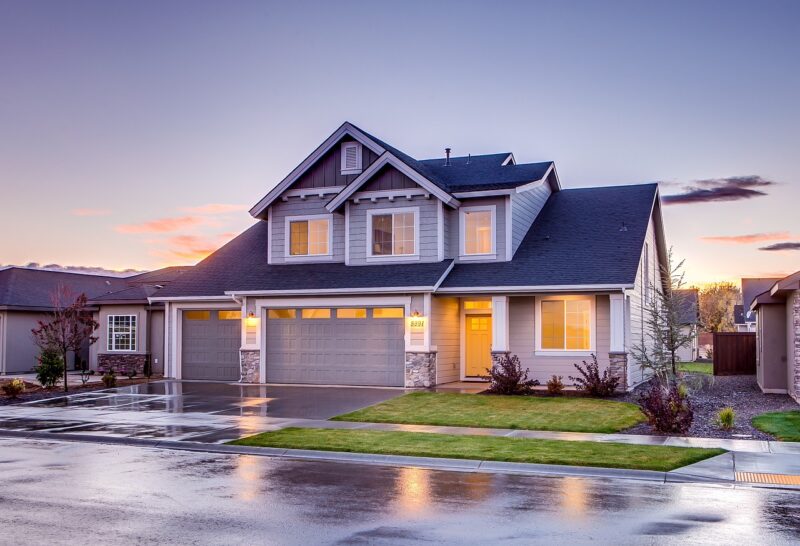Why Tiny Homes Are Taking Over: The Fascination with Downsized Living
November 13, 2024

In recent years, the tiny home movement has captured the imagination of people worldwide. As urbanization increases and material resources dwindle, living a simplified life in a compact space holds an undeniable allure. More than just a trend, tiny homes embody significant shifts in values, lifestyle choices, and even financial philosophies. In this article, we’ll explore the undeniable factors contributing to the popularity of tiny homes and why they might just be the future of housing.
1. Understanding the Tiny Home Movement
The tiny home movement emerged in response to feelings of disconnection from nature, skyrocketing property prices, and the detrimental effects of consumerism. This shift encourages people to reconsider the amount of space they really need and prompts them to declutter their lives.
A tiny home is generally defined as a compact dwelling, often under 400 square feet, designed to accommodate all the necessities of modern living. What started as a niche phenomenon has now turned into a cultural movement that emphasizes minimalism, sustainability, and intentional living.
2. Financial Freedom: The Cost Benefits of Tiny Homes
One of the most compelling reasons to consider a tiny home is financial freedom. The cost of buying and maintaining a traditional home can be astronomical, especially for younger generations struggling with student loans and inflated housing markets. In contrast, tiny homes offer:
- Lower Mortgage Payments: With a reduced square footage comes a significantly lowered mortgage, often allowing buyers to own their homes outright without substantial debt.
- Reduced Utility Costs: Smaller spaces lead to smaller energy needs. Tiny homes often employ energy-efficient systems and designs that minimize resource waste.
- Minimalist Lifestyle: Living in a tiny home encourages a minimalist mindset, reducing unnecessary expenses and allowing individuals to focus on experiences over possessions.
Homeownership can seem like a distant dream for many, but the tiny home movement makes it accessible and manageable.
3. Connection to Nature and Sustainability
Tiny homes often emphasize harmony with nature, often incorporating eco-friendly designs and materials. Homeowners are generally keen on sustainable living practices, partly due to the environmental implications of traditional housing. Tiny homes contribute to sustainability in various ways:
- Reduced Footprint: Smaller buildings require fewer resources and have a lower environmental impact over their lifespan, creating less waste and fewer carbon emissions.
- Use of Sustainable Materials: Tiny homes often utilize reclaimed or sustainable materials, promoting eco-friendly construction practices.
- Encouragement of Outdoor Living: Many tiny homes feature outdoor spaces that bolster the connection to nature, like small gardens, decks, or patios that invite a lifestyle integrated with the environment.
As climate concerns grow, many individuals find purpose in making environmentally conscious decisions, and tiny homes embody this ethos.
4. Flexibility and Mobility: Tiny Homes on Wheels
A standout feature of many tiny homes today is their mobility. Tiny living doesn’t just signify smaller space; it can also mean the freedom to choose when and where to live. Many tiny homes are built on wheels, allowing residents to:
- Travel Freely: Owners can easily relocate their homes, exploring new communities or landscapes with ease while avoiding permanent ties to one place.
- Experiment with Different Locations: Living in different environments—from mountains to beaches—becomes far easier and more attractive in a tiny home on wheels.
- Avoid Stagnation: The freedom of mobility helps individuals embrace spontaneity and adventure, enhancing their quality of life while offering unique experiences that traditional homeowners may miss out on.
This flexibility encapsulates the essence of the tiny home movement—embracing a life less burdened by possessions and responsibilities.
5. Community and Connection
As the tiny home movement gains traction, so do the unique communities surrounding them. Tiny home villages sprouting up worldwide are designed to promote communal living, where residents share experiences, resources, and a sense of belonging. These communities foster:
- Social Connections: Living among like-minded individuals encourages connections, friendships, and shared values, combating the isolation many face in urban living.
- Resource Sharing: Communities often enable shared resources like gardens, tools, and communal spaces, enhancing sustainability and reducing individual burden.
- Support Systems: Shared experiences and resources naturally create supportive networks to help those transitioning to tiny living.
Choosing to live in a tiny home can offer both physical and emotional richness through community engagement and meaningful relationships.
6. Navigating Regulations and Challenges
Despite the allure of tiny homes, there are challenges and regulations to consider:
- Zoning Laws: Many local governments have regulations that complicate tiny home placement, often classifying them as RVs instead of residences, leading to legal hurdles.
- Insurance and Financing: Traditional financing options may not cater to tiny homes, necessitating creative financial solutions and insurance policies that meet unique needs.
- Design Limitations: Designing a functional and aesthetically pleasing tiny home requires creativity and strategic planning due to spatial constraints.
While navigating these obstacles may be daunting, innovative and resourceful owners typically find solutions tailored to their circumstances.
7. The Cultural Shift: Why Tiny Homes Are Here to Stay
The tiny home movement represents more than a trend; it is indicative of cultural shifts in values surrounding ownership, consumption, and personal happiness. As more people wake up to the idea that happiness is less about possessions and more about experiences, tiny homes will likely continue to thrive.
The fascination behind downsized living is rooted in the desire for freedom—freedom to travel, freedom from debt, and freedom to live authentically. With a new generation seeking meaningful lifestyles, the legacy of the tiny home movement will likely echo across society for years to come.
Conclusion
The rise of tiny homes represents a radical shift in how people are approaching housing and lifestyle choices. As individuals increasingly seek simplicity, financial freedom, and environmental consciousness, tiny homes provide an attractive, viable option that merges personal values with quality of life.
In a world of excess, the admiration for downsized living serves as a reminder that we can find happiness, connection, and fulfillment in spaces and choices of our own making. As the tiny home movement continues to grow in popularity, embracing change and simplicity becomes an appealing path for many seeking a more meaningful way of living.








